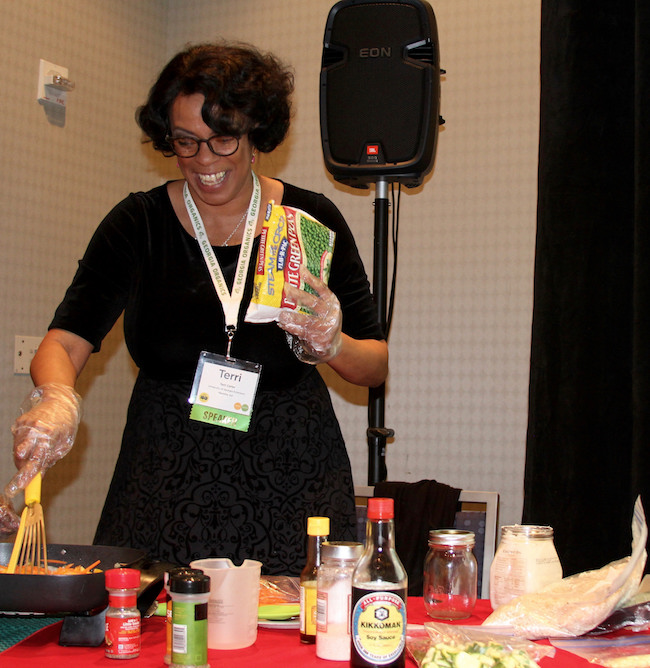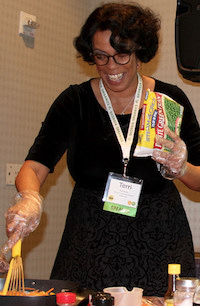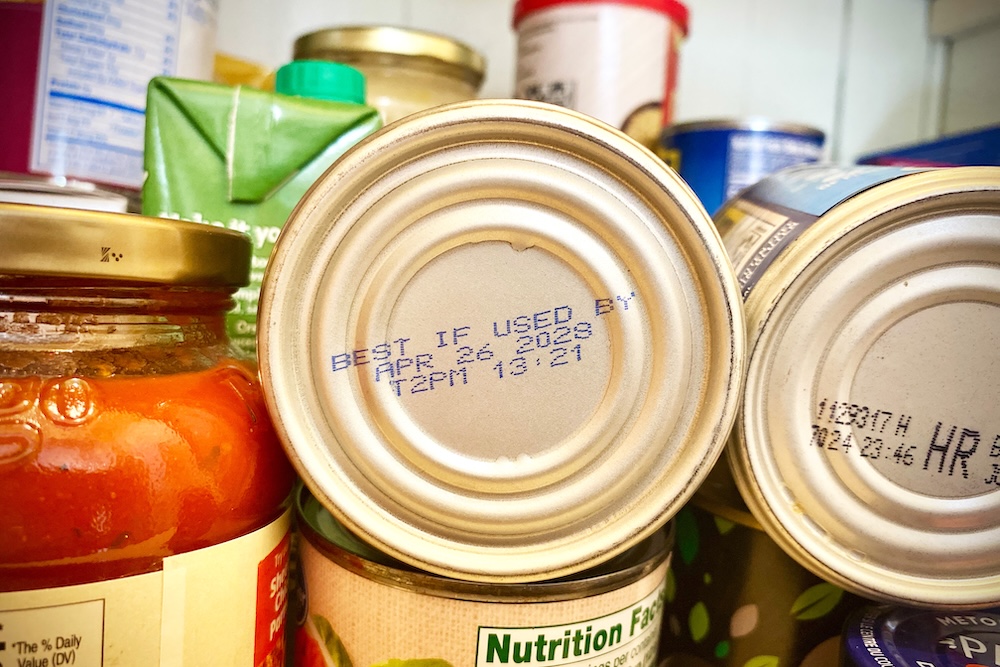In Cobb County, Georgia, Terri Carter’s job with University of Georgia Cooperative Extension is to educate residents on proper nutrition. As a self-declared “proud woman of the South,” Carter, a UGA Extension Family and Consumer Sciences county program assistant, has found a unique way to teach nutrition and a history lesson at the same time. Carter’s love of the South and her heritage led her to develop the “Food History of the South” program.
“The program traces Southern, soul, country and comfort foods back to their roots. It’s nutrition education, but it’s also a journey back into the history of Southern food heritage,” she said.
Growing up in central Alabama, many of Carter’s childhood memories are set around a dinner table or a family gathering where food is the centerpiece.
“My heritage in food came from my grandmother. She was a maid and she cooked for people. She cooked for church, for family, for friends, for funerals,” said Carter. “My grandparents grew food and my grandmother cooked food. We didn’t even have a fast-food restaurant in our town until I was in middle school.”
“I love chitterlings and smothered chicken and that’s my right,” she said.
Now an adult with three children of her own, Carter set out to learn more about Southern food and its evolution. She created each Southern food history lesson she teaches, and each includes nutritional information.
Carter “followed the seeds” to discover how Southern staples, like black-eyed peas, were first served in the South. She knew that Native Americans relied on what became known as the “Three Sisters”: beans, squash and corn.
“My great-grandmother was part Creek Indian. The Native Americans were hunters. They hunted buffalo, deer, elk, rabbit and then they gathered seeds, nuts, fruits, berries and roots,” she said. “Their most ancient crop was corn. It was part of their daily diet and the cobs were used as fuel for fire.”
Carter keeps this side of her heritage alive, in a small way, by using corncobs to fuel her home grill.
Rice, sorghum and pearl millet accompanied slaves brought to North America from West Africa. “And they brought salt, which was used as a flavoring, a food preserver and as a means of retaining body moisture in the desert,” she said.
Rice is especially challenging to grow.
“Rice had been grown in West Africa for hundreds of years, and growing rice is a very specific skill. Most of the slaves came from agricultural areas,” she said. “Forty percent of the slaves came to Georgia through Charleston, (South Carolina,) and were brought here to grow rice. They knew how to dike the marshes and flood the rice fields. And they made sweetgrass baskets, which was also a skill brought here from Africa.”
Carter’s research taught her that a typical slave diet included cornmeal, pork, salt and herring. She also discovered that, by the 1930s, most poor Southerners were eating a similar diet due to the Great Depression. “Their diets consisted of mainly molasses, fatback and cornbread,” she said. “At that point, everyone had to eat what they had available to survive.”
At the conclusion of her Southern food lessons, Carter shares healthy adaptations to traditional recipes like black-eyed peas and collard greens. She hopes her clients will think about those who introduced these foods to the South when they cook and serve a traditional Southern meal.
Learn more about handling and preparing food from UGA Extension: www.fcs.uga.edu/extension/food.









